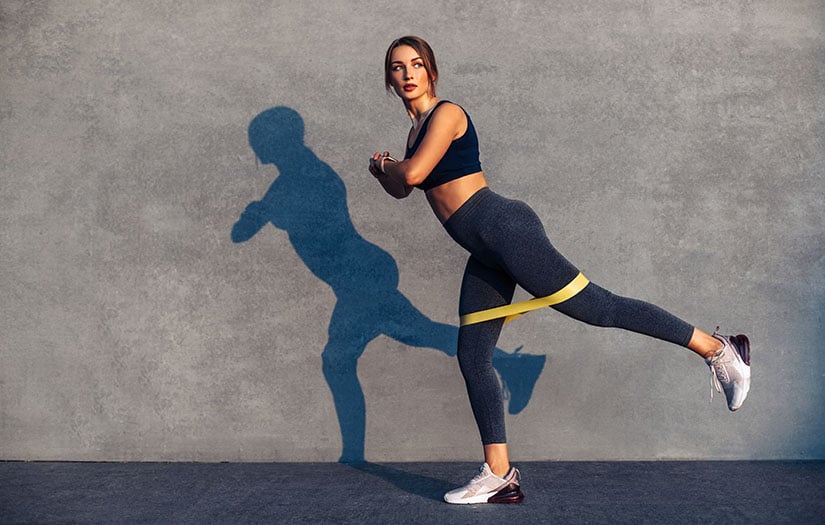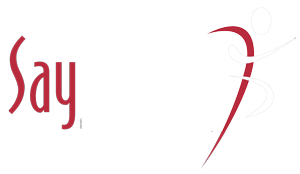If you’re motivated to get your daily workout in but can’t always make it to the gym, you’ll likely get moving outside, do some bodyweight exercises, or maybe you break a sweat in the home gym you built! However, buying free weights and other fitness equipment can get pricey!
So, what’s an easy way to add a level of difficulty to your workout without breaking the bank? Because lifting logs and pushing cars isn’t ideal, is it?
When it comes to exercise, adding resistance is important to develop strong bones and muscles. An easy way to add more resistance to each exercise and challenge your body through various movements is the addition of resistance bands.
TYPES OF RESISTANCE BANDS
POWER RESISTANCE BANDS
Power resistance bands, also known as loop bands, are pretty much identical to massive rubber bands. They are traditionally 41 inches in length and 0.18 inches thick, with varying thicknesses that determine the level of resistance (greater thickness equals greater resistance). The greatest level of resistance you can purchase is equivalent to about 175 lb!
These types of bands are great for all types of exercises including body weight assistance such as pulls-ups; full-body workouts such as squats; physical therapy exercises; static stretching or dynamic warm-ups to increase range of motion; and you can also anchor them to free weights or barbells for extra resistance on strength workouts.
TUBE RESISTANCE BANDS
Tube resistance bands or bands with handles are made to use instead of mimicking gym machines and dumbbell exercises. They can also easily attach to doors, bars, poles, or any stationary, sturdy object. These bands vary in resistance as well from 10-to 50 pounds and are generally best for pulling and pushing exercises.
Hip circle bands or mini bands are like loop bands — just much smaller in size. Many will have a fabric surrounding the band to prevent the band from slipping (a common occurrence with a rubber material). These bands are mainly used for lower body exercises to create more tension for your quads, glutes, and hips. Mini bands traditionally come in “light, medium, heavy, and extra heavy” sizes which translates to about 5-50+ pounds of resistance.
LIGHT THERAPY RESISTANCE BANDS
Light therapy resistance bands are very long and thin. They do not loop, are up to 7 feet long, and are mainly used for injury rehabilitation. These bands are great for providing low impact resistance when working through injuries or just trying to improve range of motion through stretching! They typically range in resistance from 3-10 pounds.
FIGURE 8 BANDS
Figure 8 bands are bands shaped in figure 8, with handles on both sides. These bands aren’t as popular as the bands mentioned above because their use is limited to mostly upper body movements. They are best for pulling and pushing exercises and offer 8-20 pounds of resistance.
WHAT ARE THE BENEFITS OF USING BANDS?
Resistance bands are great for any workout routine because they are low cost, easily portable, and can be used in almost any setting! Moreover, they offer great muscle-building benefits!
Bands can help build muscular endurance and explosiveness, balance and coordination, stability, flexibility, mobility, and even increase muscle size and strength. One meta-analysis revealed that when testing either band against free weights and machines on increases in muscular strength for both the lower and upper body, no differences were found between methods. Indicating that bands can provide just as many gains in strength as free weights.
Other studies suggest that free weights are superior in improving strength (which logically is sound since free weights have no limit on resistance that can be added), however, most studies conclude resistance bands are a comparable exercise method when it comes to building muscular strength and size.
Bands are also extremely beneficial for novice lifters. In one study, resistance bands helped decrease body fat and increase muscle strength to the same degree as free weights in an overweight/obese population.
For individuals just starting a fitness program to lose weight and improve health, bands can be a really easy way to integrate more resistance, build coordination within exercise movements, and challenge muscle groups without the danger of lifting heavy free weights.
5 EASY RESISTANCE BAND EXERCISES
If you’re looking to add some extra resistance to bodyweight exercises, here are 5 movements you can start with!
- Banded Front Squats
- Single Leg Romanian Deadlift
- Lateral Walk
- Side Plank High Pull
- Lateral Raise
1. Banded front squats (using loop bands or tube resistance bands)
Stand in the middle of the resistance band with feet hip-width apart, holding one end of the band in either hand. Bend arms to bring hands up next to ears, and lift elbows until your tricep is parallel to the floor… this is starting position. Keeping arms still and core engaged, bend knees and sink hips back and down till you hit a 90° angle. Press through feet to extend legs and return to standing.
2. Single Leg Romanian Dead Lift (using loop bands, tube resistance bands, or mini bands)
With feet staggered, put a band around the front of the right foot and hold it in the left hand. Hinge forward and kick left leg back, while pushing hips back (keeping them level), keeping back straight and core engaged, and then return to standing. Repeat on both sides.
3. Lateral Walk (using mini bands)
Placing band mid-way around quadriceps or slightly above the knees, sit back in squat position (90° angle). Lift right foot and step to the right-left foot following. Repeat in both directions moving laterally from side to side.
4. Side Plank High Pull (using mini bands, loop bands, or even light therapy resistance bands)
Start in a side plank with the band under the left hand on the floor, another end in the right hand. Stay in plank as you pull the band up with your right hand, leading with your elbow. Return to start. Repeat on both sides.
5. Lateral Raise (using loop bands or tube resistance bands)
Stand with feet staggered, knees slightly bent, and place the right foot in the center of the resistance band and grab both ends (one end in each hand). Raise arms outward to the sides until parallel to the floor (making a 180° angle). Slowly brings arms down to the side of the body.
Resistance bands offer a great addition to any workout whether you are a novice lifter or an elite-level athlete. They can add varying degrees of resistance to compound movements, challenge your stability and muscular endurance through various ranges of motion, and improve strength and flexibility. Due to their versatility, they can be utilized in almost any setting. Moreover, they are relatively inexpensive and easy to transport. A full set of power resistance bands (10-170 lb.) can be purchased for under $100!
So, if you’re looking for an extra challenge for your workouts or need a suitable alternative to gym equipment, resistance bands have been proven to be just as effective as free weights!
.
Kaminski, J. (n.d.). How effective are resistance band workouts? Retrieved July 29, 2022, from https://blog.nasm.org/how-effective-are-resistance-bands


